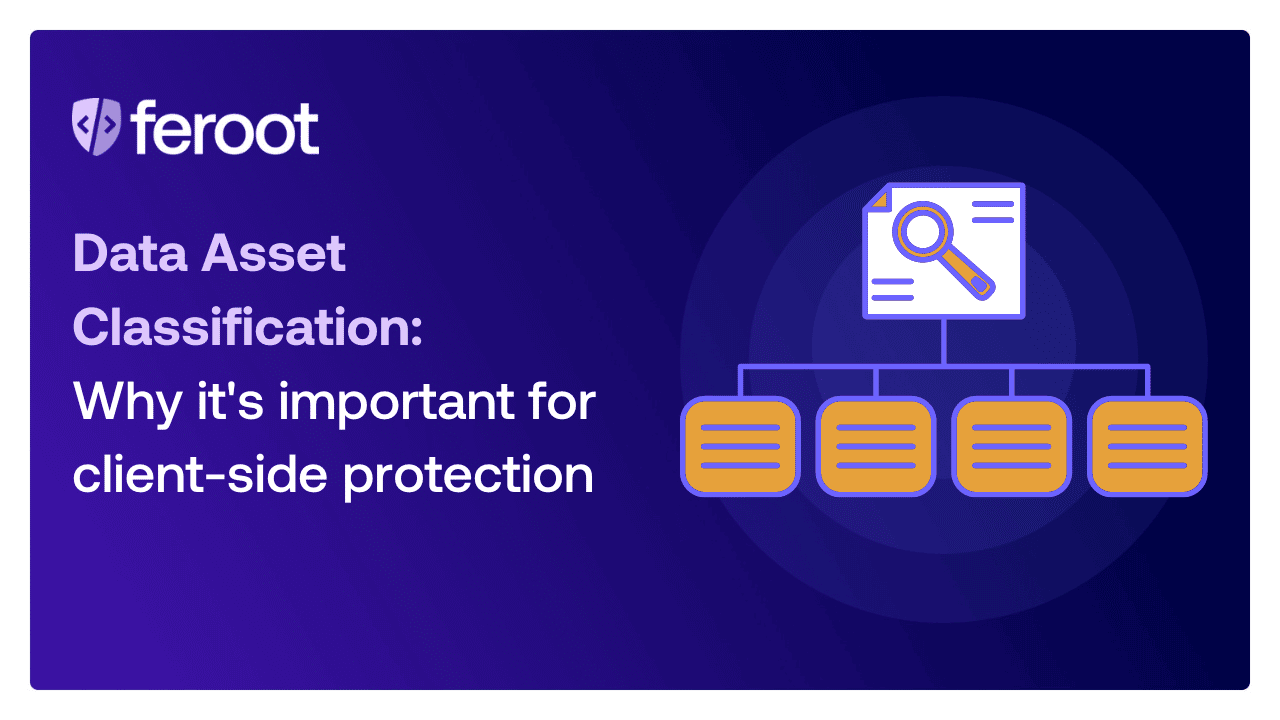Web technologies are continuously evolving; both through growth and modernization. Modern web applications are becoming a must in enabling businesses to be able to sell online, acquire customers, and deliver the digital experiences today’s users want. Companies from various industries are increasingly relying on transacting sensitive Personal Identifiable Information (PII) digitally. In this article we are going to take a look at a few reasons why data classification is important for modern businesses from both security and privacy aspects.

1. Assess security and privacy risks
Good cybersecurity starts with knowing and understanding the threats to your business, including threats to the data. By classifying and understanding the risk level of the ingested, stored, and processed data companies much better equipped to be able to ensure continuity from several perspectives:
- Understanding. What kind of monetary, reputational or overall risk is associated with potential compromise.
- Prioritization. Assessing security and privacy risks allows organizations to identify the most significant threats and prioritize their efforts to address them. This ensures that resources are allocated to the areas of greatest risk and can help to minimize the overall impact of security incidents.
- Compliance. Assessing security and privacy risks can help organizations to identify potential compliance issues and take steps to mitigate them. This can be critical for organizations that are subject to laws and regulations that govern the handling of personal information and other sensitive data. Data classification helps organizations to comply with legal and regulatory requirements related to data protection, such as the General Data Protection Regulation (GDPR) and the Health Insurance Portability and Accountability Act (HIPAA).
- Continuous Improvement: Assessing security and privacy risks on a regular basis allows organizations to identify new and emerging threats and to adjust their risk management strategy accordingly. This can help to ensure that the organization’s risk management efforts remain effective over time.
2. Implement security controls based on data sensitivity
Data classification can help organizations implement security controls that are more effective and tailored to the specific needs of different types of data, their end-users and technologies used to deliver digital services. This can help minimize risk of data breaches and other security incidents, protect sensitive information, prevent data loss, improve incident response:
- Access Control: By classifying data, organizations can implement more granular and effective access controls that are based on the level of sensitivity of the data both internally by ensuring that only authorized personnel can access sensitive information and at the customer edge by implementing access control mechanisms within application’s boundaries and over supply-chain.
- Encryption: Identifying the data that needs to be encrypted and implement the appropriate encryption methods can help to protect sensitive information from unauthorized access and disclosure.
- Incident Response: By knowing the data types and it’s risk level, organizations can better understand and adjust the incident response plan by having data visibility across the overall organization’s boundaries.
3. Improve data management processes
Classifying data can help organizations establish a clear understanding of data ownership, implement effective access controls, implement backup and recovery plans, establish retention and destruction policies, and ensure compliance with legal and regulatory requirements. It also can help organizations to improve their data management process by making it more efficient.
Data classification is important for modern businesses as it allows them to assess security and privacy risks, implement effective security controls, and improve data management processes. By classifying and understanding the risk level of ingested, stored, and processed data, companies are better equipped to ensure continuity from various perspectives, including understanding the risks associated with potential data breaches, prioritizing efforts to address the most significant threats, ensuring compliance with legal and regulatory requirements, and continuously improving their risk management strategy. Additionally, data classification can help organizations implement security controls that are tailored to the specific needs of different types of data, and improve data management processes by establishing clear data ownership, implementing access controls, and ensuring compliance.